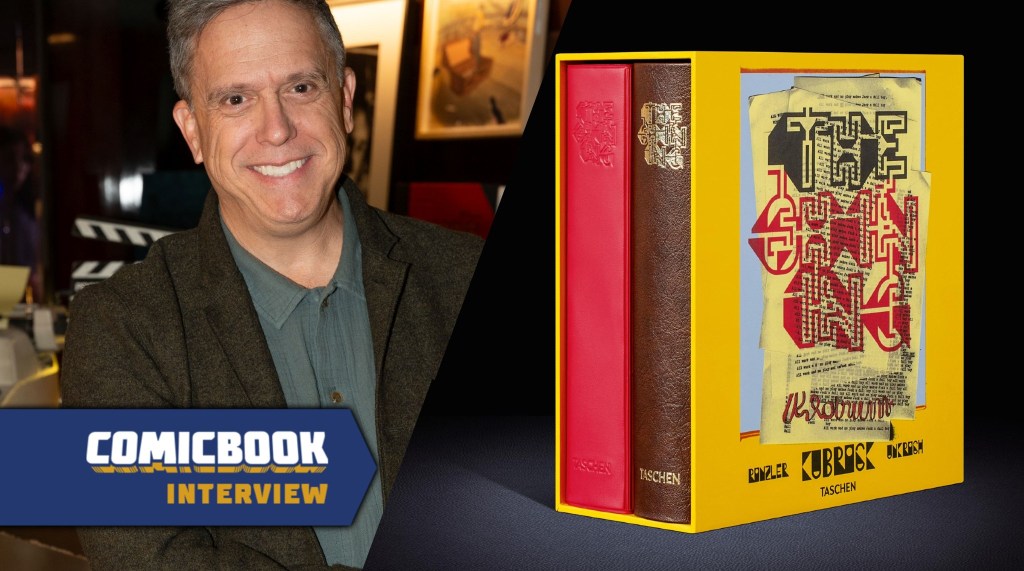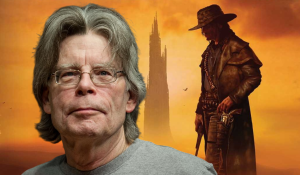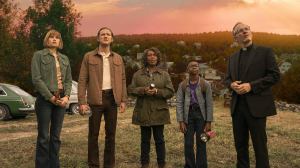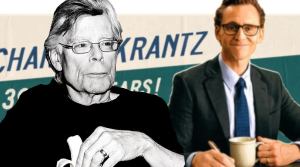Lee Unkrich’s obsession with The Shining began almost immediately after he first saw it at age 12. The Oscar-winning filmmaker carried his interest with him for decades, eventually creating the fan site theoverlookhotel.com, which has now culminated in the release of his two-volume tome, Stanley Kubrick’s The Shining. Taschen has finally released the Popular Edition of the text (following the quick sell out of the Collector’s Edition in 2023) but in a fitting twist of fate, Unkrich’s search for more information on the making of The Shining was further spurred by The Kubrick Archives hardcover book, first published nearly twenty years ago by…Taschen.
Videos by ComicBook.com
“That gave me my first glimpse into a little bit more,” Unkrich said in our exclusive interview. “And it was tantalizing, but it was also super frustrating, because I, of course, thought, ‘Oh my God, if there’s this, how much more is there? And what is it?’”
The answers came when Unkrich was doing press for Toy Story 3 and found himself in London. Following the filmmaker’s death in 1999, the Kubrick estate donated the written materials from his career to the London College of Communication who eventually opened the Stanley Kubrick Archive in 2007. Unkrich spent two days pouring through Kubrick’s actual materials, including script pages for scenes cut out of the movie, which offered him some answers.
“I walked away from that thinking, ‘What use is any of this to me if I don’t do something with it?’ And I felt like I was in a position, given my work in the film industry, to maybe have a chance of bringing a book into the world that would really deeply document the making of the movie.”
To make that happen, Unkrich took on a monumental task, interviewing “literally everybody living” that stepped foot onto the set of Kubrick’s The Shining (a full list of the people he spoke with, and even when, can be found in the back of the book). Unkrich needed help to get it done, though, and teamed up the late Jonathan W. Rinzler, best known for his “Making of” books that have pulled back the curtain on the likes of the original three Star Wars movies, Planet of the Apes, and more.
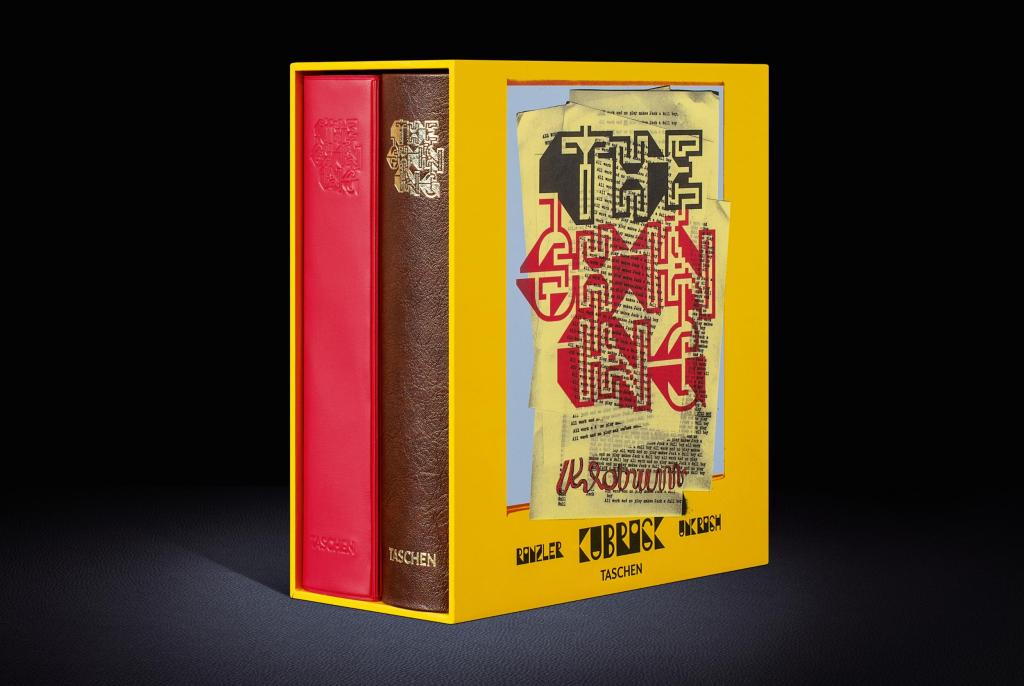
Unkrich and Rinzler’s book is divided into two. The first is the 800+ page “Making of,” and the second a scrapbook with hundreds of behind-the-scenes photos (starting with pre-production but then organized in the order of the film itself). To give it all another layer, however, the second volume is modeled after and recreates the actual scrapbook that was intended to be a focal point of The Shining, which Stanley Kubrick decided to excise from the film where possible (though it does still have a prominent placement in the sequence when Wendy interrupts Jack while he’s writing).
“The more I’ve learned about the making of the film, and the more that I’ve learned about the film that Stanley made, in terms of what he shot versus what up into the final film… Now my experience of watching [The Shining] is forever changed, because I know what the scenes were that he cut out. And I know where they were meant to go,” Unkrich said. “I always have this background awareness, where I’m watching the film now, about the ghost parts of the story.”
Unkrich went the extra mile for the recreation and tried to capture the contents of the book itself with newspaper clippings and photography, using “texts and photos found in the Kubrick Archive” as inspiration.

The book also highlights some of the inconsistencies about the making of The Shining that have taken on a life of their own, almost becoming fact, including an entry in the Guinness Book of World Records. Still visible on the Guinness website, the World Record book claims that the sequence of Jack and Wendy on the stairs holds the record for “Most retakes for one scene with dialogue.” As they write it, 148 takes were reportedly done of the scene.
“It’s just not true,” Unkrich said. “I have all the receipts.”
Among the many items in Unkrich’s possession about the making of The Shining are the notes taken by script supervisor June Randall, detailing the exact amount of takes done for every single shot in the movie. For those curious, the shot in The Shining that actually had the most takes was the long tracking shot near the start of the movie, as Stuart Ullman walks Jack and Wendy through The Gold Ballroom during their initial tour of the Overlook.
“For whatever reason, Stanley did a lot of takes of that shot,” Unkrich adds. “But even then, the numbers are not even nearly up to what some of the things you see out there [say] online.”

Some elements of The Shining, however, remain nearly unknowable. The iconic carpet patterns found in The Overlook’s hallway or in Room 237 have taken on a life of their own with fans, but when Unkrich did his research for the book he found very little material about the decision-making process behind either of the designs. The Shining’s art director Les Tomkins proved to be the only person with real details about them, but the base inclination was they had to be “as ugly as possible.”
“They had this idea that American hotel carpets were ugly,” Unkrich said.
He continued, “Now, is that the whole story? No. Of course we can’t know what was going on in Stanley’s mind, but when you look at least two of the carpet patterns he picked, the very iconic one, that was an existing pattern that was designed by a British designer, but it looks very maze-like, right? So you have to think that Stanley made a choice based on that. In terms of the colors, I think they were going for garish. I think it was all about being garish. And then you look at the carpet pattern in Room 237, that couldn’t possibly be more overtly sexual, right? I don’t know if that one was an existing pattern or not, but you know that Stanley probably really dug that pattern and knew it would be perfect.”
The same thing can be said for the iconic “dog costume.” Costume designer Milena Canonero told Unkrich she “had no particular memories” of it. but knew that she didn’t make it, instead believing that it was just rented by the production from a costume shop.
For Unkrich, not knowing the answers to these specific questions, or any of the other details that are unknowable about The Shining, aren’t a checklist of things he needs to learn about the film to complete his fandom.
“As much as I totally embedded myself in all things that’s been happening for a very long time, I still walk away from this project with questions that may never be answered,” Unkrich said. “And I kind of like that. I like that I didn’t completely pull this thing out into the sunlight.”

Another project that Shining fans are no doubt well aware of is Rodney Ascher’s Room 237. In the 2012 documentary/film essay, various obsessives offer their readings of Kubrick’s movie with ideas of what the film is really about, including: Native American assimilation by white settlers, the Holocaust, or that The Shining is Kubrick’s way of secretly confessing to the fact that he was part of a conspiracy to fake the moon landing. Readers may quickly notice in Unkrich and Rinzler’s text that, throughout the book, there are references made to each of the ideas and “takes” from Room 237, some subtle and some directly noted as being a response.
“I’m well aware of all the conspiracy theories and all the weird, apocryphal stories having to do with the filming of the movie,” Unkrich said. “I know which ones are true, I know which ones are completely false, and I know which ones have a grain of truth in them that have been exaggerated over the years. So, yes, in writing the text, I definitely told Jonathan, I really want this to correct the record. I don’t want to do it in a pissy way, but I want this to become the definitive, accurate telling. So there are moments where we’re kind of sideways alluding to rumors online or letting the Kubrick family say something about the theories.”
The release of this edition of Stanley Kubrick’s The Shining, fittingly, feels like a book closing for Unkrich. Even though his obsession with the movie is now complete, he noted a specific fear he has about the future.
“I cross my fingers and hope that someone doesn’t send me some bombshell thing that I will spend the rest of my life regretting,” Unkrich said. “The fan in me wants more. The fan in me wants somebody to say, ‘Hey, here’s the deleted hospital epilogue that somehow survived being incinerated.’”
The story of that scene and more can be found in Stanley Kubrick’s The Shining, now available from TASCHEN books.

